
3D Pose Cat Models for Animation & Design
In the world of animation, 3D pose cat models are key. They help bring feline characters to life. These digital models let artists create realistic cat animations.
With 47 models in formats like Blender, FBX, and OBJ, artists have many choices. They can pick the right model for their project. From simple to detailed, these models make animations better.
The need for realistic models is growing. 3D pose cat models are essential for films, games, and educational content. They make any production better. Let's explore how these models impact animation and design.
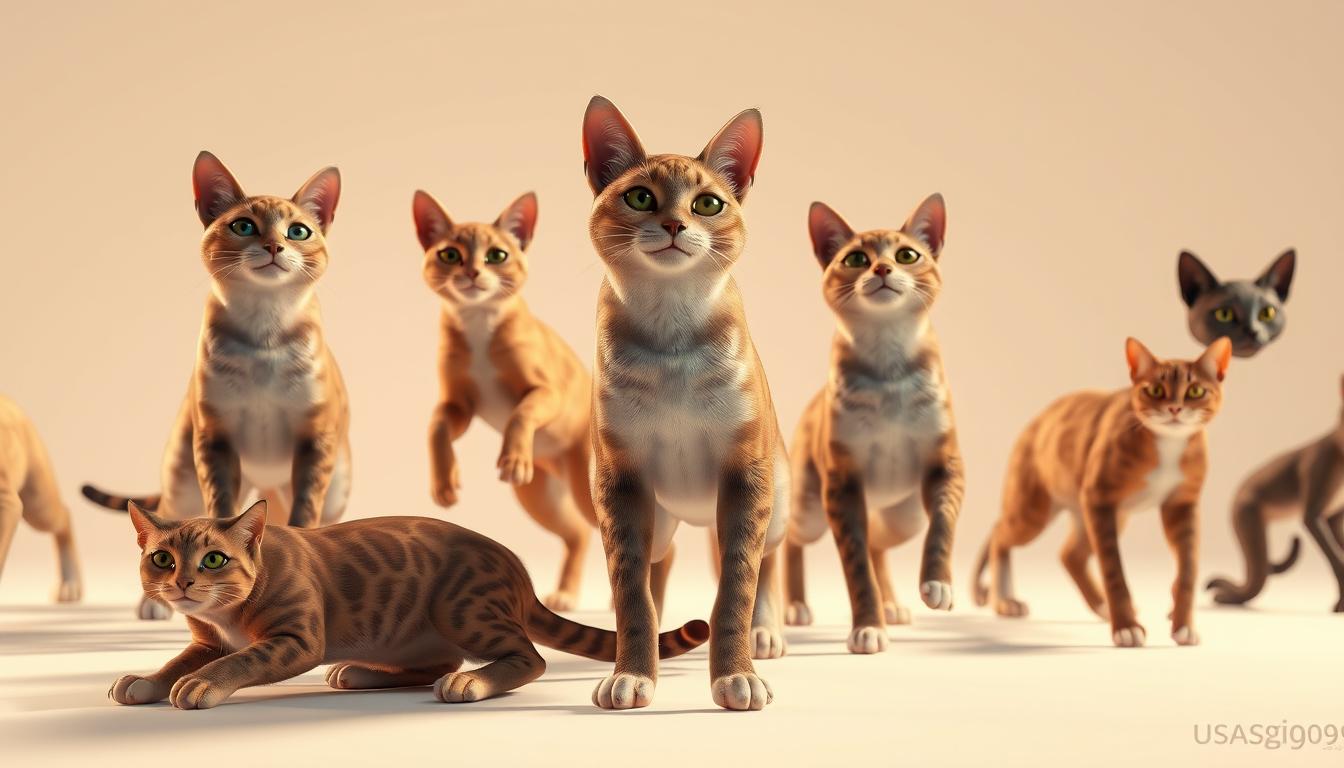
Key Takeaways
- 3D pose cat models enhance the realism of animations.
- Available in multiple formats like OBJ, FBX, and STL.
- Includes options for low-poly and rigged models.
- Support for 3D printing with a vast selection of printable models.
- Models have been viewed thousands of times, indicating popularity.
- Discounts of up to 50% available on some models.
Introduction to 3D Cat Models
3D cat models have changed digital art and animation a lot. They show the special traits of real cats and are key in many design projects. Artists start with sketches, then turn them into detailed digital sculptures. This lets them really show off their creativity.
The animation tools have gotten better, making 3D cat models easier to make. Now, software lets artists work faster and more easily. For example, the CAT3D system can make a whole 3D scene in just one minute.
It uses a special method to make sure the models look right. This method makes sure each image is accurate and consistent. This is thanks to a huge database of over 31,000 images of cats.
Artists and animators use these models in many projects. They help make animation and interactive media better. The detailed data and better modeling make sure the final product is amazing.
Why Use 3D Pose Cat Models?
3D pose cat models are getting more popular. They make animation and design projects look better and work better. Creators want to make things look real, so they use these models.
These models show off details like how cats move and sit. They make things feel more real for people watching or using them.
Enhancing Animation Realism
Using 3D pose cat models makes animations look more real. Motion capture helps copy how cats move exactly. This makes animations feel true to life.
Adding real textures and lighting makes it even better. It draws people in with its beauty.
Streamlining the Design Process
3D pose cat models also make design easier. They give designers assets they can use right away. This saves time and makes work flow better.
Designers can use these models in many projects. This gives big benefits for making and changing things.
Click to Watch Video Tutorial.
Types of 3D Pose Cat Models Available
3D pose cat models are made for different uses. You can find low-poly models, rigged cat models, and animated cat assets. Knowing what each type is for helps you pick the right one for your project.
Low-Poly Models
Low-poly models are great for fast rendering. They're perfect for mobile games or virtual worlds. These models are simple but still look good.
For example, a low-poly cat model might have 122 polygons and 35 vertices. It's light and looks nice. Plus, it's affordable, often costing around $5.00.
Rigged and Animated Cats
Rigged cat models are perfect for quick animations. They have skeletons for smooth movements. Artists can make animations look real with these models.
There are many formats like .STL, .OBJ, and .FBX. But, not all keep their rigging and animations after changing formats. It usually takes about 24 hours to convert formats.
Buying these advanced models can make your animations better. There are many choices for projects like movies or games. Knowing about low-poly and rigged models helps designers pick the best for their work.
3D Pose Cat Models for Animation Projects
3D pose cat models are key in film and game design. They make visuals better and stories more engaging. With models of cats like the Burmese and Somali, creators can connect with viewers deeply.
These models make characters in films and games come alive. They add a special touch to any story.
Applications in Film and Gaming
In films and games, 3D pose cat models are vital. They help tell real stories. For example, they show cats stalking or jumping, making viewers feel more connected.
By using different poses, animators can show off each cat's unique traits. This makes the story richer. It helps filmmakers and game designers add these characters smoothly into their tales.
Visual Effects and Storytelling
Good storytelling in animation depends on how well characters show feelings and personality. 3D pose cat models help by offering many actions to animate. This makes the characters feel real.
The Somali cat model is a great example. Its low-shedding, long fur adds to its appeal. With high-resolution textures and detailed animations, designers can make scenes that wow audiences. This makes the story more engaging and emotional.
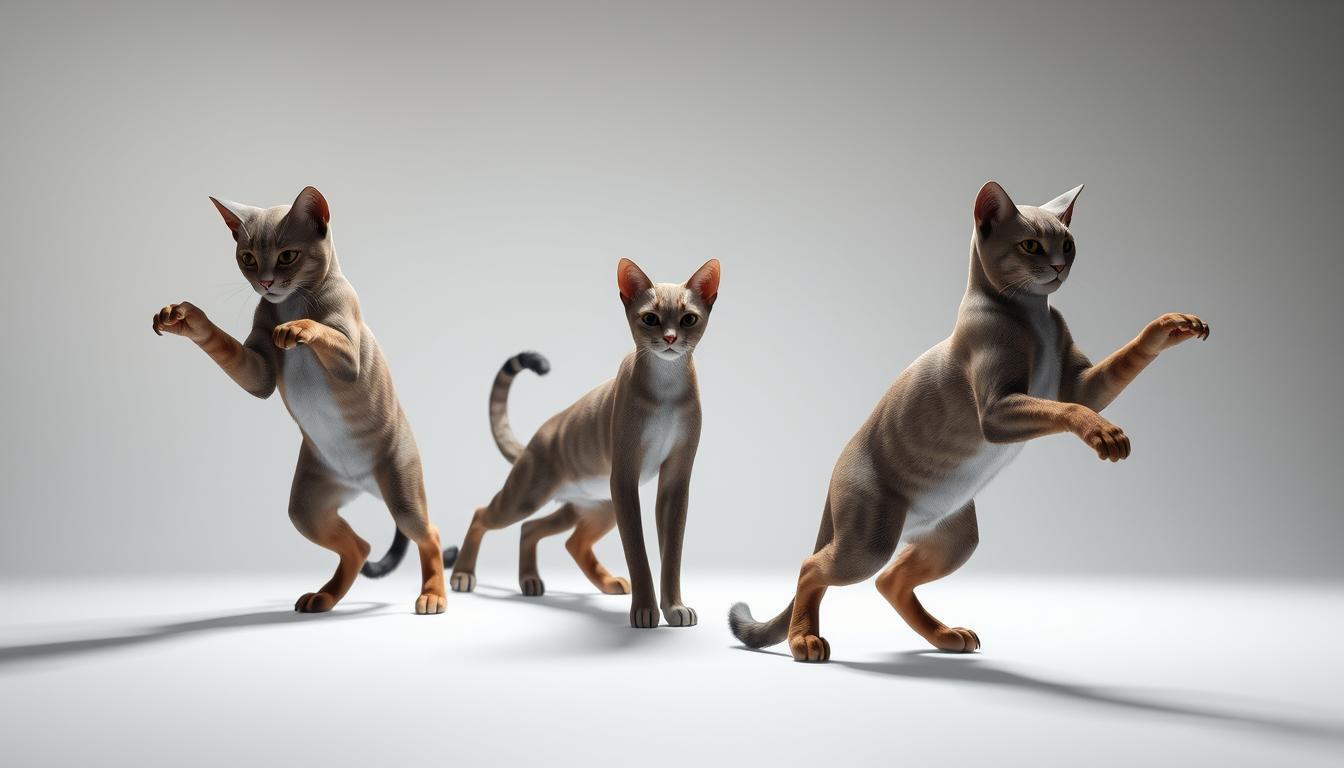
Where to Find High-Quality 3D Pose Cat Models
Looking to add 3D pose cat models to your projects? Many platforms offer both free and paid options. This lets you choose based on your budget and needs. Knowing the pros and cons of each helps pick the best for your work.
Popular Online Marketplaces
Many 3D model marketplaces have high-quality assets for different uses. Sites like Free3D, TurboSquid, and Sketchfab are great examples. They have models like the "cat in 10 poses" 3D print model for $5.00.
This model has over 11,000 views and a 5-star rating. It's perfect for all skill levels. Conversion requests are usually ready in 24 hours, so you get your files fast.
Free vs. Paid Resources
Choosing between free and paid 3D models depends on several things. Free models might be basic and have unclear licenses. Paid models, found in some marketplaces, offer better quality and unique features.
- Free 3D Models: Less detail, possible licensing problems, easy to find.
- Paid Models: High quality, strict quality checks, offers various poses and styles.
Also, during sales, you can get discounts on animal models. This makes high-quality options more affordable. Always think about how the model fits your project's needs, whether it's free or paid.
Creating Custom 3D Cat Models
Custom 3D modeling lets designers make unique cat models. Choosing the right tools is key for good results. Software like Blender and Maya are great for different skill levels and projects.
Each software has special features for modeling, texturing, and rendering.
Software Recommendations
Blender is perfect for beginners. It's free and has lots of tutorials. It's great for learning 3D modeling and texturing.
Autodesk Maya is for experts. It works well with ZBrush and Mudbox. This makes it great for detailed fur and textures.
Essential Techniques for 3D Modeling
Learning key modeling techniques is crucial. Start by breaking the model into parts. Use full 4K mapping for each part.
UV mapping is important. Make sure the UV area fits the 1:1 window. This prevents overlap. Details like the face need more resolution than the body.
Hair systems are also key. A good hair system uses vertex weight. This makes the model look real with about 5,000 parent hairs and 50-150 child hairs per parent.
Final outputs should have passes like base color and roughness. Substance Painter's Smart Materials help with textures. But, painting by hand can make details better.
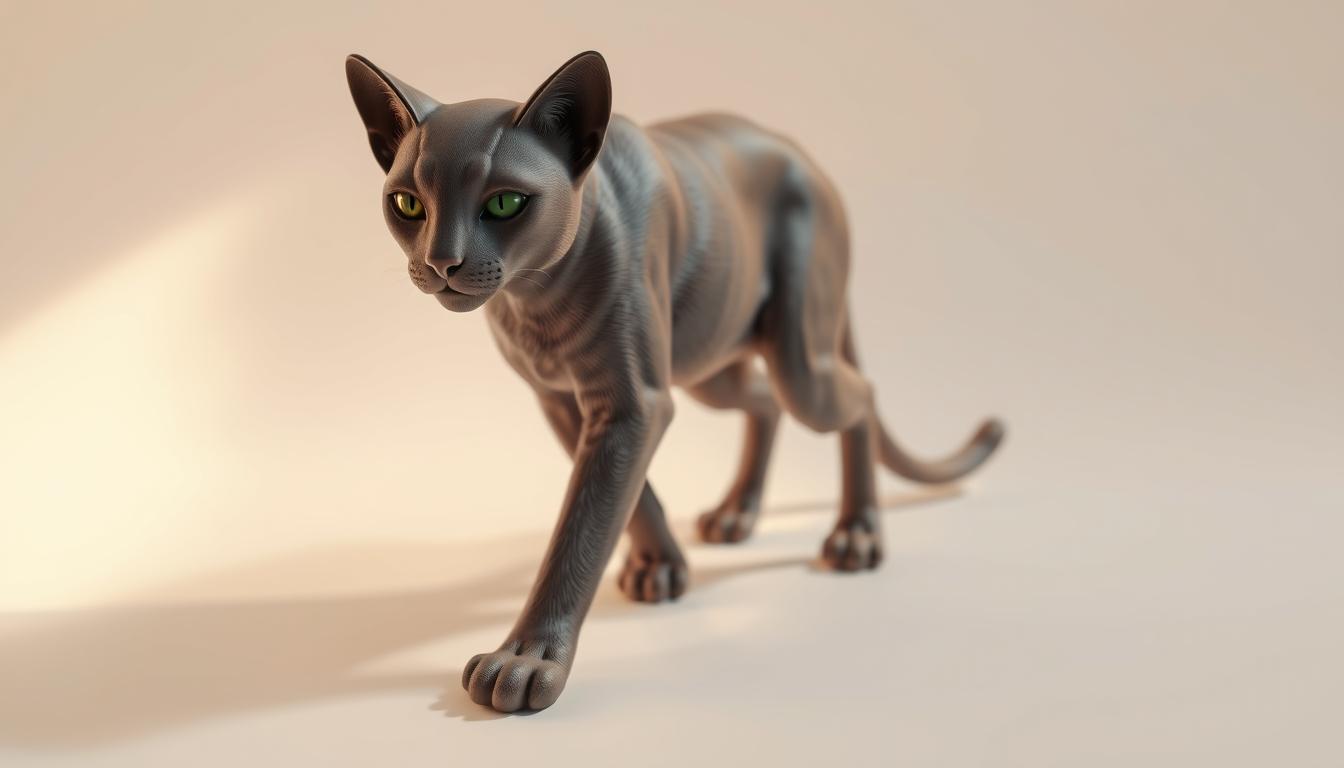
3D Pose Cat Advantages for Designers
Designers are finding 3D pose cat models very useful. They make creative projects better by saving time and effort. These models help designers focus on details and storytelling.
They can try out different poses and expressions easily. This makes projects more interesting and emotional. Designers can quickly change poses to get the look they want.
Using 3D pose cat models makes clients happy. They want content that looks good and engaging. Designers who use these models meet and often beat client expectations. This opens doors for more work together.
| Advantage | Description |
|---|---|
| Time Efficiency | Reduces the time spent on repetitive modeling tasks, allowing designers to concentrate on creative aspects. |
| Pose Versatility | Facilitates quick adjustments to poses and expressions, enhancing the dynamism of designs. |
| Visual Quality | Generates high-quality visuals that meet professional standards for client satisfaction. |
| Marketability | Improves the overall appeal of projects, making them more attractive to potential clients and audiences. |
Best Practices for Using 3D Pose Cat Models
To get the most out of 3D pose cat models, knowing the best practices is key. Paying attention to texture and lighting makes your animations look better. This not only makes them look good but also keeps the character's personality alive.
Texture and Lighting Considerations
Texture is very important for making models look real. Using high-resolution textures can make them look even better, but it might take longer to render. Choosing a bright background helps your model pop and avoid blending issues.
Being careful with colors in your prompts leads to better results. But, too much detail can make things complicated.
Animating Your Cat Models Effectively
When you're animating, following best practices is crucial. Make sure your model works well with animation systems like Animate Anything. This makes things easier and faster.
Good rigging is also key for smooth movements. Remember to keep your model symmetrical during modeling and texturing. This helps your animations look more natural and engaging.
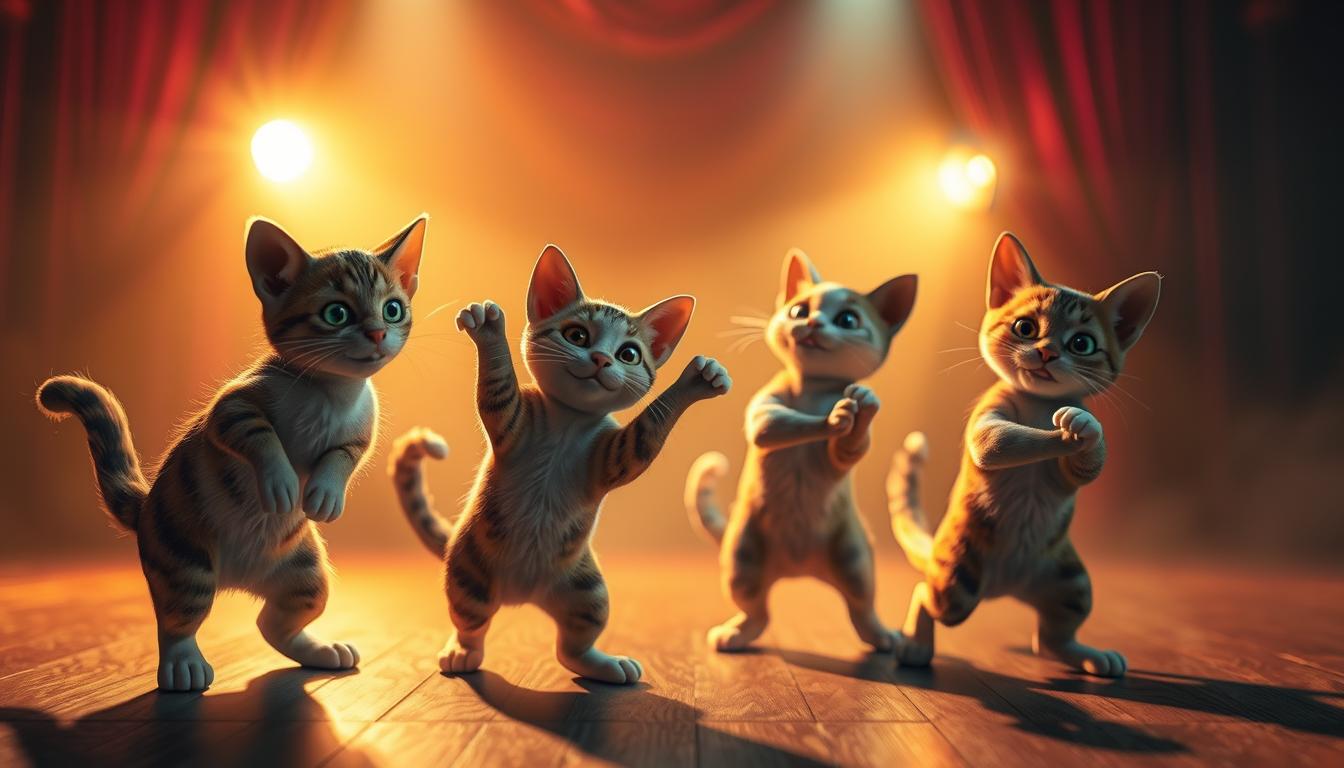
How to Incorporate 3D Pose Cat Models in Projects
Adding 3D pose cat models to projects can make them more engaging. It's important to know how to use them well. This means understanding how to mix them with other assets and tools.
Integrating with Animation Software
To use 3D pose cat models, you need to work with animation software. Tools like Blender and Adobe's apps are great for this. They help make the models look real.
Artists spend a lot of time on these models. They add lots of details and set up scenes with many lights. This makes the animations look amazing.
Combining with Other 3D Assets
Mixing 3D pose cat models with other assets is key. It helps create lively scenes. For example, using textures from Textures.com can make the models look even better.
This way, designers can make full 3D scenes fast. Systems like CAT3D can do this in under a minute. This makes working with many assets easier than before.
| Animation Tool | Features | Usage Time |
|---|---|---|
| Blender | 3D modeling, sculpting, rendering | Several hours for sculpting |
| ZBrush | Detailed sculpting and texturing | Multiple sessions |
| Substance Painter | Texture painting, material authoring | Ongoing throughout project |
| Adobe Software | Graphic design, motion graphics | 50+ layers in post-production |
Real-Life Examples of 3D Pose Cat Usage
3D pose cat models are key in animation and design. They help tell stories and make art stand out. These models bring amazing results, catching the eye of many.
Case Studies in Animation
Big animation films use 3D pose cat models to make cats come alive. Studios like Pixar and DreamWorks make cats that people love. They show off cool moves and feelings, pulling viewers in.
Showcasing Artistic Design
Art projects get a big boost from 3D pose cat models. They help show feelings and stories well. For example, a mix of digital and real art shows how 3D models can spark new ideas.
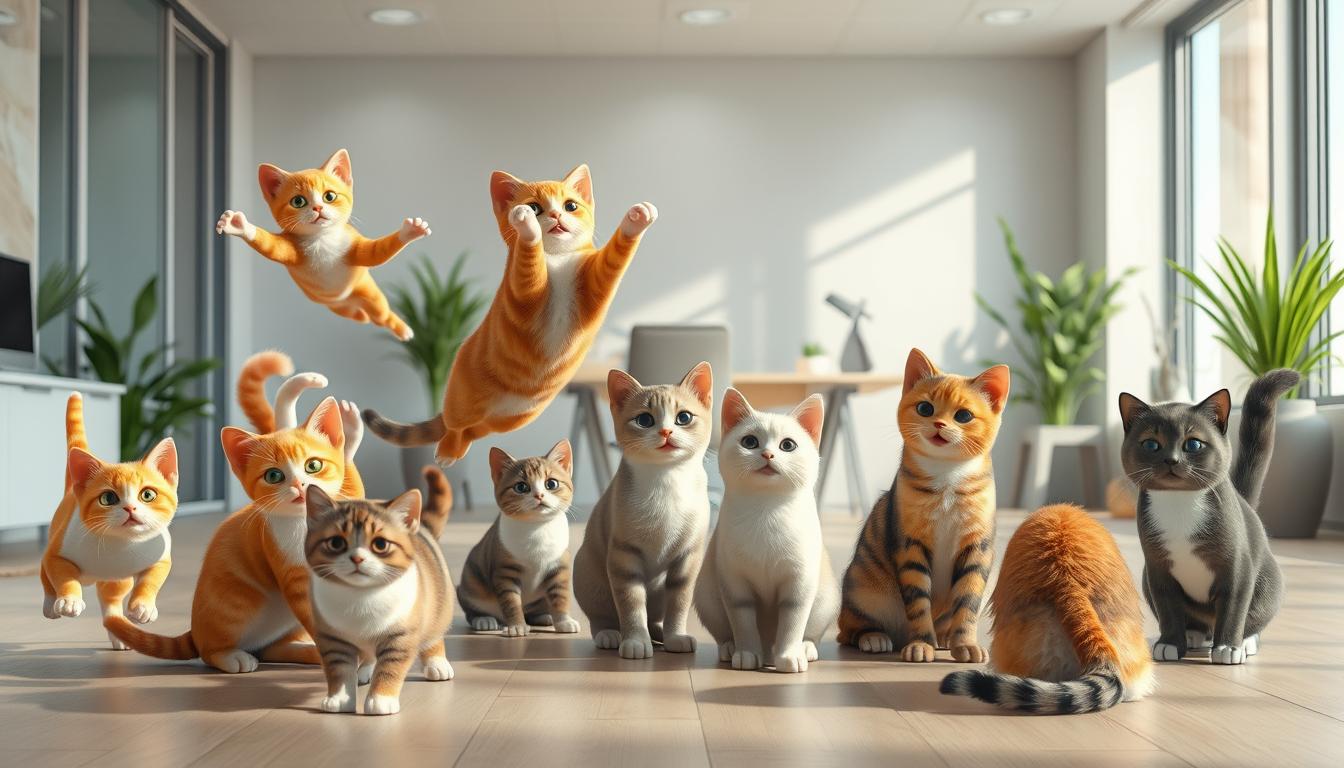
Looking at different projects shows how 3D pose cat models improve animation and design. They are flexible and real, helping artists and animators explore new ideas.
Future Trends in 3D Cat Modeling
The world of 3D cat modeling is changing fast. New tech like artificial intelligence and machine learning is making big changes. These changes make models more realistic and efficient, opening up new possibilities.
Advancements in Technology
New tools and methods are coming to 3D modeling. For example, CtrlAni3D has about 10,000 images for better modeling. With over 41,300 images for training, accuracy in cat animations is getting better.
Also, new tech like AniMer is beating old methods in tests. It starts with 3D data and then adds 2D, showing the push for better modeling.
Potential for Interactive Media
3D cat models are getting ready for interactive media. As tech gets better, these models will be more real in VR and AR. This means users can interact with 3D models in new ways.
This opens up new ideas for designers. They can mix art with tech to make interactive worlds. The need for detailed 3D cat models is growing, making it exciting for animators and designers.
Conclusion
The rise of 3D pose cat models is changing the game for designers and animators. This tech brings a new level of realism to animations, making them more engaging. With 409 cat categories and 31,881 images, the future of 3D models looks bright.
This dataset has made annotations better, helping artists in their work. It uses advanced models and a dual annotation process. This means projects can now be more accurate and detailed.
As these models get better, so will animation insights. This opens up new chances for designers and developers. To learn more, check out this refined 3D pose dataset that sets a new standard.
FAQ
What are 3D pose cat models, and why are they important?
3D pose cat models are digital cats that look and move like real ones. They are key in animation, design, and storytelling. They help make characters that feel real to people.
What are the different types of 3D pose cat models?
There are low-poly models for games and quick scenes. And there are rigged, animated cats for more detailed work. Each type meets different needs, balancing looks and function.
How can 3D pose cat models enhance animation realism?
These models make animations feel more real by mimicking cat movements and poses. They use special techniques and look settings to draw viewers in.
Where can I find high-quality 3D pose cat models?
Look on sites like Free3D and other online stores. Free models are good for quick jobs. But, paid models offer better quality and legal use for pros.
What software is recommended for creating custom 3D cat models?
Blender and Maya are top choices for all skill levels. They help with making detailed cat models through various techniques.
What are some best practices for using 3D pose cat models in animations?
Focus on textures and lighting for a better look. Make sure the model moves smoothly. Use animation that keeps the cat's natural feel.
Can you provide examples of real-life projects that utilized 3D pose cat models?
Many animations and games use these models for great stories. They show how careful use of these models boosts creativity and storytelling.
What are the emerging trends in 3D cat modeling?
New trends include AI and machine learning. These are changing the field. There's also a chance to use them in VR and AR, offering new chances for creators.